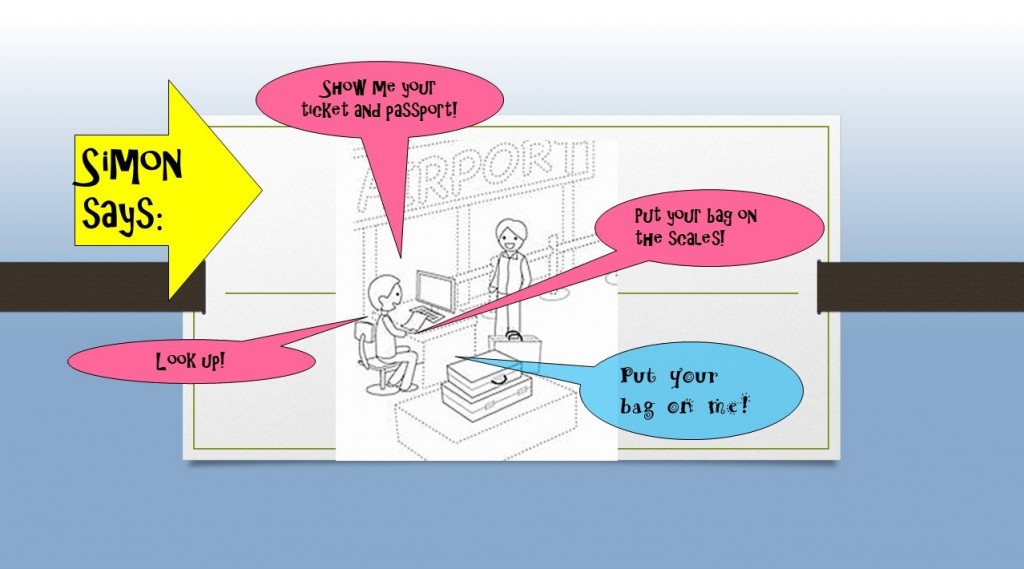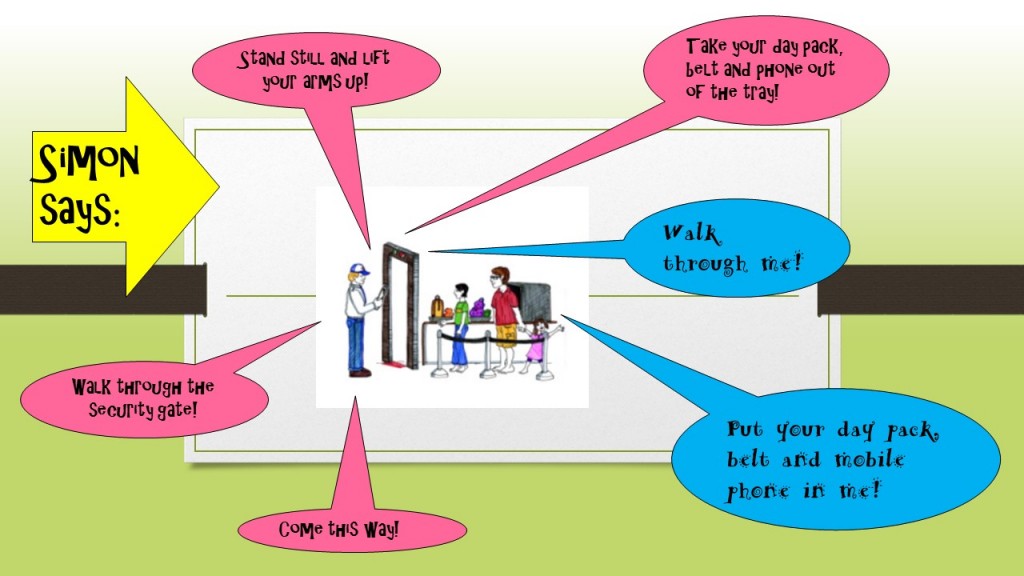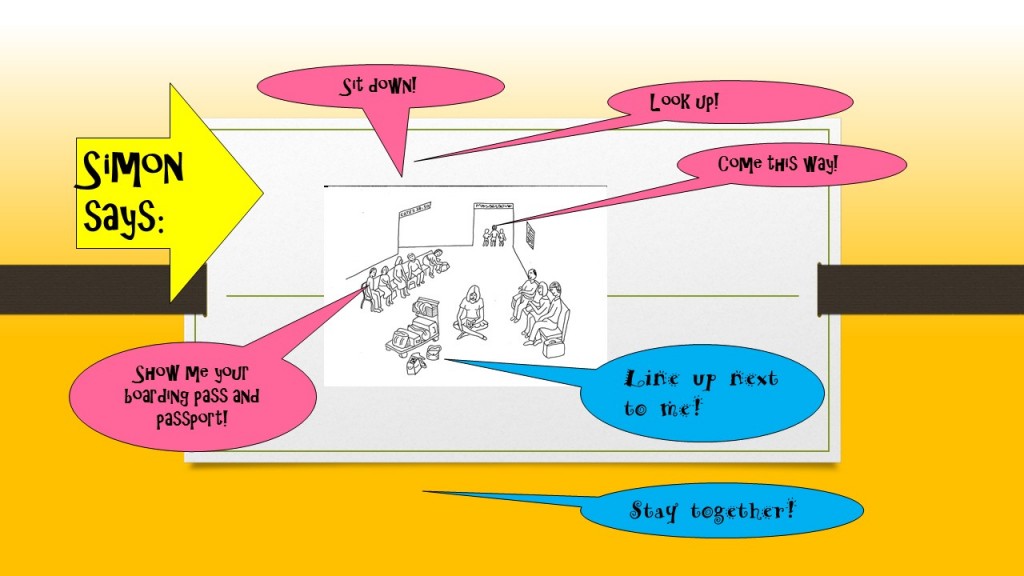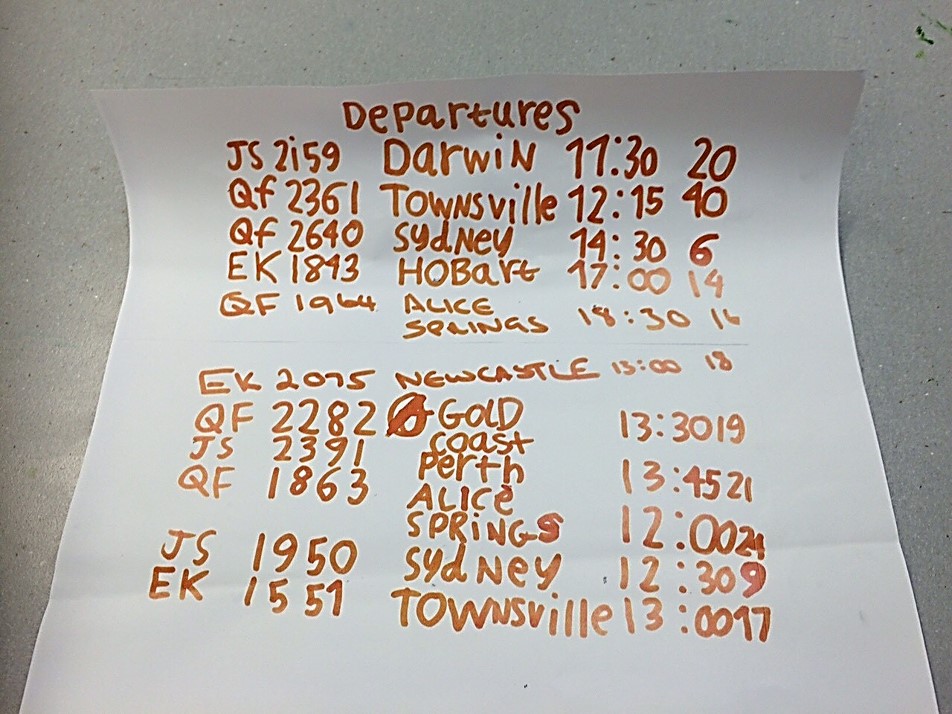All my reflections so far this year have been drawn from my own Dancing Wombat world. There’s never a dull moment there! But every week, I also have two classes of delightful primary school students who demand my attention.
One young man – I’ll call him Dougal – had only just started in the older group this year, and his teacher was uncertain how he’d manage. Knowing how my daughter is capable of much more than she shows, I took the “let’s have a go” approach. We’ve all been delighted with the result. Dougal is a positive, engaged and active contributor in class. Something that Dougal brought to the last lesson really made my day. After the previous lesson, he had carefully drawn up a detailed departure timetable, with airline codes (JS, QF and EK), flight numbers, destinations, departure times and gate numbers. He had written 11 of these in neat columns, as you can see from the attached photo.
It must have taken him a long time. And in doing it, he showed a great deal of creativity, initiative and perseverance. I was thrilled, and asked him to share it with the class. Later, we used it at the check in counter, to help our check-in personnel give out the information the “passengers” needed to find the right gates for their “flights”.
For me, the voluntary effort he put into writing this schedule was further proof that he’s motivated. How fantastic! We all learn better when we’re motivated, don’t we?As I prepare for this week’s lesson, prepare my “jobs roster” and forage for dress-ups, I’ll be feeling that much more encouraged, knowing that for at least one young boy, I’ve struck a chord.
Teaching Performing Arts in a specialist school gives me a fair amount of flexibility. It’s amazing how many skills, sequences and strategies can be taught through music, games and role play. I love it!
In the younger class, I have been focussing on rhythm, listening, right and left crossovers with arms and legs – indeed, the very concepts of “right” and “left”! We sing, we dance, we do actions and lots of games – especially “Simon says”.
I find that “Simon says” is a great way to transition the students from one part of the lesson to the other. They never seem to tire of playing it. More and more these days, we hear about the importance of not sitting for too long. And as anyone who has worked with young children knows, this is a hard ask anyway! “Simon says” is a fun way of building regular movement into the lessons. But that’s not all!
As well as teaching listening and looking skills, it is also a subtle – but effective – vehicle for teaching song actions. I think it’s rather like slipping grated vegetables into muffins, or a Bolognese sauce. It’s a means to an end, and the students don’t really notice this endgame, because the result for them – or even the process of getting there – is enjoyable.😀😜
As mentioned, my older students are currently learning about “Going to the airport.” This is reinforcing and extending skills they learned last term, in a unit based on “Going to the cinema”. The current unit is proving an effective and fun way of teaching them a variety of life and social skills. It also provides plenty of opportunities for extending the more capable students while supporting the others.

If you stop and think about it, there are heaps of things which people need to do at an airport which are also done in many other situations. Like what, I hear you asking? These are the things I’ve thought of – perhaps you can think of others:
- Queuing – which involves waiting and being ready for your turn. We queue in many different places, often with multiple distractions. It can be especially challenging for those with special needs to find the line, get in line, wait in line, move and behave appropriately while in the line and finally, interact appropriately when they reach the end of the line.My students need to learn:
– What are the cues? What should they look and listen for?
– What might make queuing difficult? Noise, physical proximity to others, lights, needing to stay still…
– How their actions can affect others. Are they wearing a backpack which might hit someone in the face if they turn around? Might someone trip on a bag they have placed on the floor?
– What might help them manage these challenges?
- Basic greetings/exchanges – reinforcing the common courtesies of life, as well as learning how to ask for and give information
My students need to learn or practise:
– Hello/please/thank you/good bye
– to give information when asked (in appropriate circumstances). For example, where are you going? How long are you going for? Is this your first time away?
– to listen to information given – times, procedures, where to go next
– how to identify where to get information, and appropriate people to ask
– speaking clearly (when they can)
- Handling multiple items – whether shopping bags and your wallet, a backpack and your MYKI, or luggage, tickets, boarding pass and even passport. This requires a physical balancing of items, making a mental note of what you have and what you need, and ensuring that important things are put away quickly and safely.

- Going through security – which happens at multiple venues, from footy grounds to Parliament House, as one of the students informed the class. It also provides another chance to practise queuing!
My students need to learn or practise:
– behaviour expected when going through Security
– how to manage sensory issues if they are “beeped” and need to have the wand run around them
- Asking directions/looking for directional information – this speaks for itself, and is not just confined to airports. Whether in shopping centres, public transport hubs, just walking up the street, being able to ask for and follow directions is an important life skill.
- Discussing strategies for managing in crowded, noisy places. My private nickname for the Chadstone Shopping Centre (Melbourne’s Chadstone is the largest shopping centre in the southern hemisphere) is “The Halls of Hell” . My technique for managing its madness is not going there. But children often don’t have a choice to avoid situations they find difficult on a sensory level. So it’s important that they have their own strategies to help them cope, by minimising the sensory impact.
- Making eye contact – which attracts a lot of discussion, because it can be extremely difficult – especially for people with ASD. Yet there are places where making eye contact is essential – like, when your passport is being checked. So my students need to work out what is most effective for them: looking at someone’s nose or forehead, perhaps?
- Listening to instructions – which are given in multiple places, from home to school to public places, and in multiple ways. It is hard to someone to follow instructions if they’re not sure what those instructions are in the first place. Are they hard to hear? Are they too difficult to read? What else can you do to get the information?

- Watching the time – time management is an important skill and one which is easy to take for granted.
My students need to learn or practise:
– boarding time versus departure time
– allowing time for doing other things
The students are really enjoying the unit so far, and delight in the opportunity to take on different roles: check in personnel, security guards, Immigration officers, flight stewards and, of course, passengers!
So until next time, Happy Wombatting!


